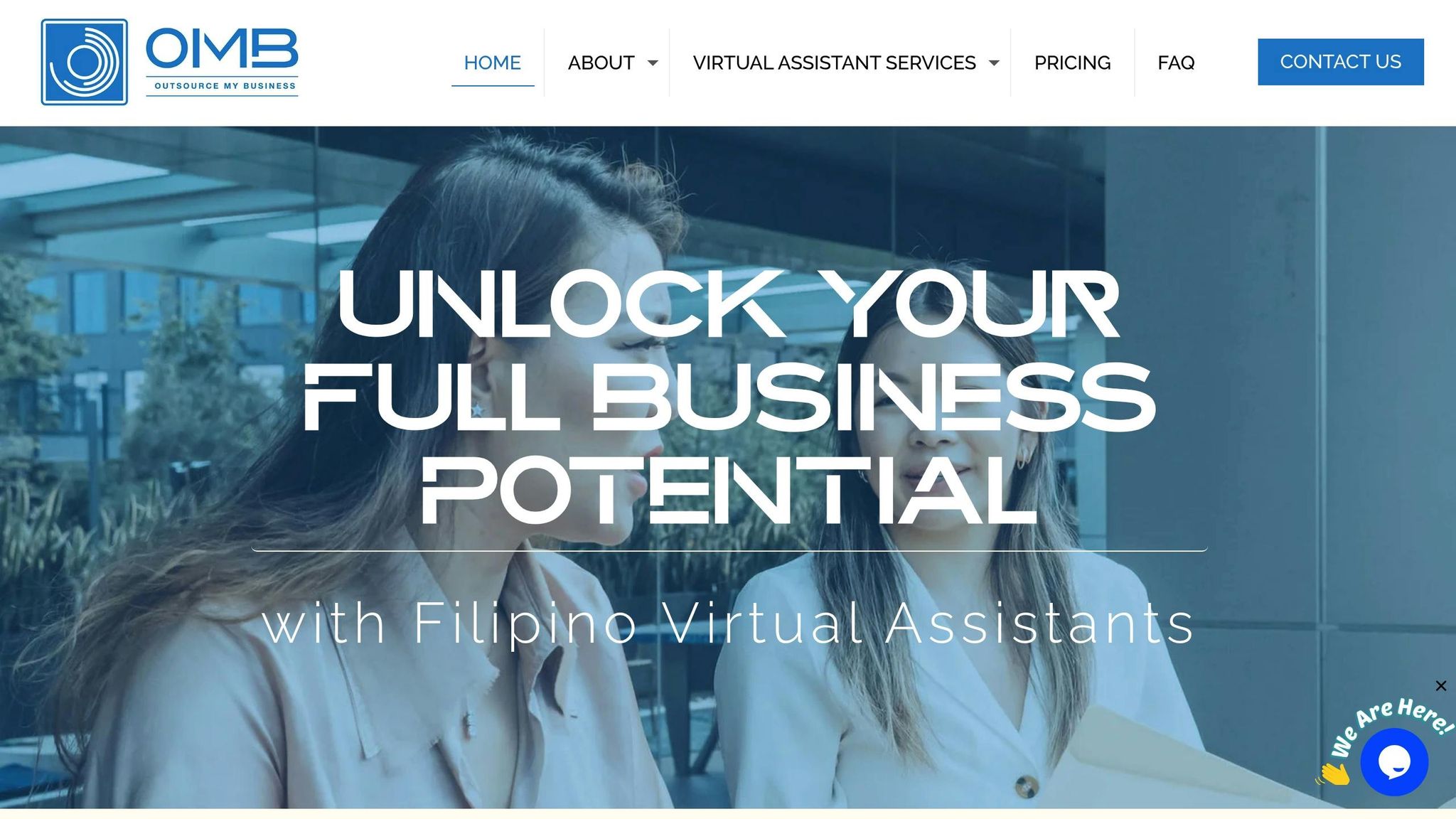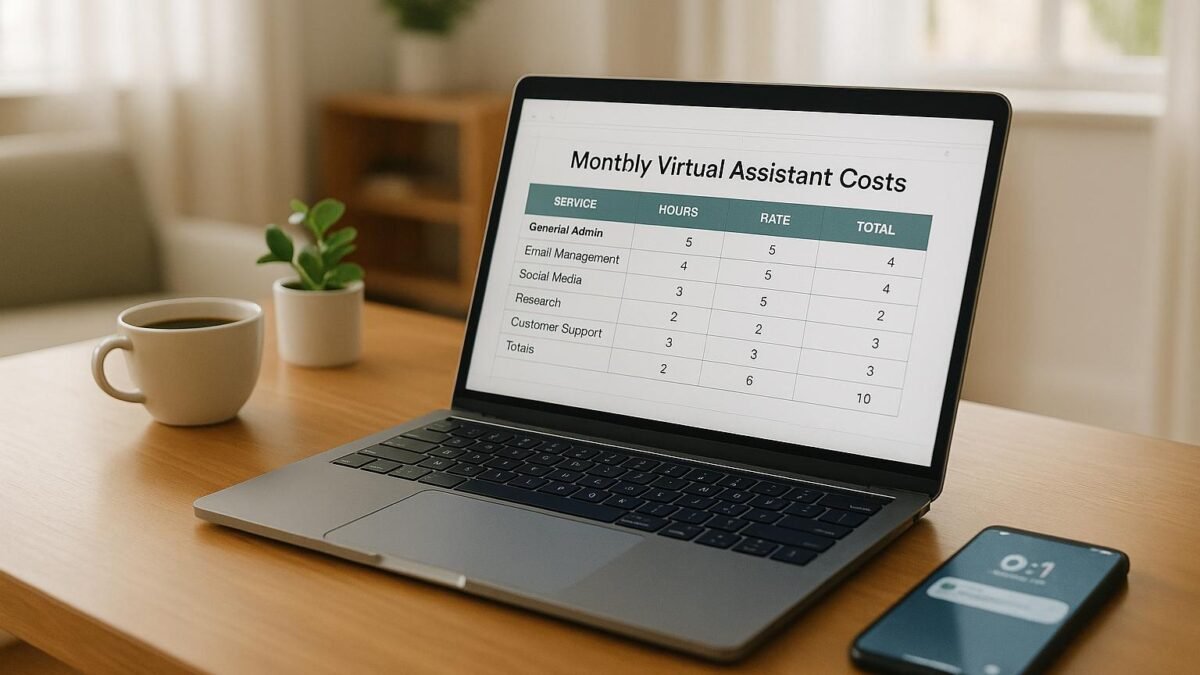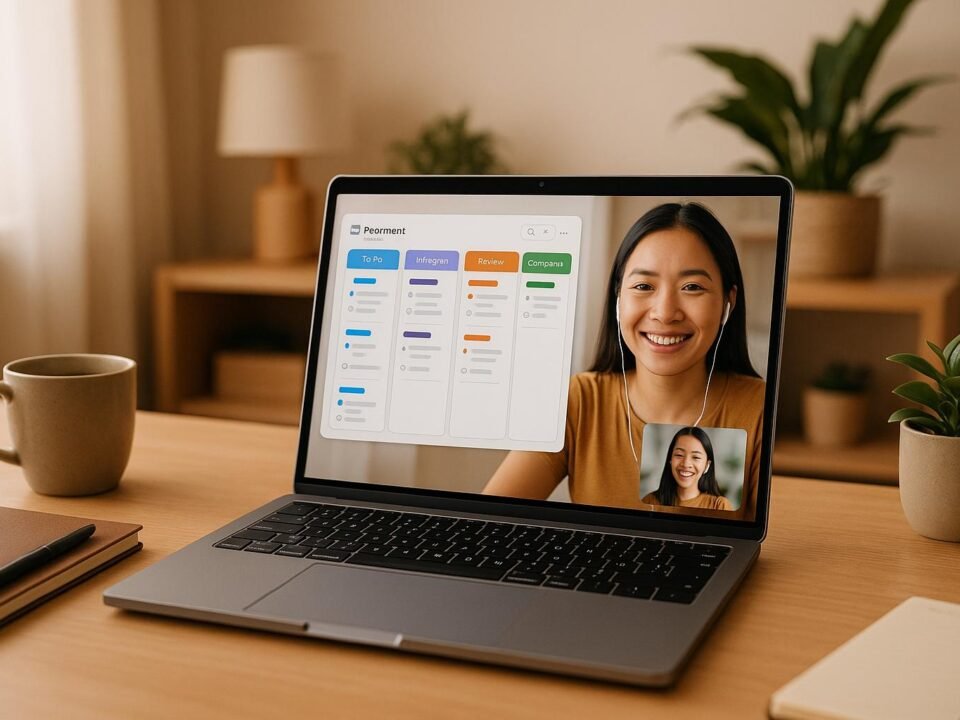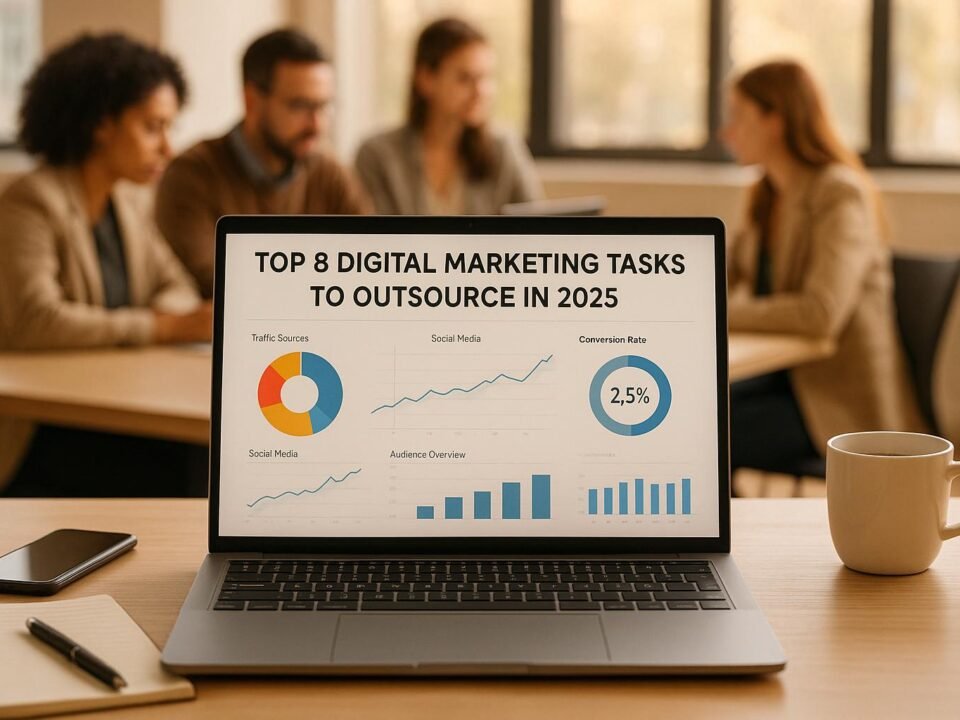Hiring a virtual assistant (VA) can save Australian businesses up to 70% on staffing costs compared to local hires. Filipino VAs are particularly cost-effective, with monthly rates ranging from AUD 600 to AUD 2,250, depending on their skills and experience. For tasks like admin, customer support, or specialised roles such as bookkeeping or IT, VAs offer flexibility and significant savings.
Key Points:
- Hourly Rates: AUD 4–20+ per hour, based on skill level and task complexity.
- Monthly Rates: AUD 600–1,800 for general tasks; AUD 750–2,250 for specialised roles.
- Savings: Filipino VAs cost up to 70% less than Australian hires, who average AUD 60,000 annually.
By hiring through agencies, businesses gain access to pre-vetted candidates, payroll management, and replacement guarantees, reducing risks and administrative burdens. Filipino VAs are skilled, English-proficient, and align well with Australian business hours, making them an efficient choice for SMEs looking to cut costs and boost productivity.
How Much Do Virtual Assistant Services Cost? – BusinessGuide360.com
Filipino Virtual Assistant Pricing in 2025
The cost of hiring a Filipino virtual assistant depends on factors like experience, skill set, and the type of work arrangement. Rates vary across entry-level, mid-level, and highly experienced professionals, as well as by the specific tasks they handle.
Hourly and Monthly Cost Ranges
For tasks like basic admin and data entry, entry-level virtual assistants typically charge between AUD 4–8 per hour. Mid-level VAs, who often have 1–3 years of experience and can handle roles like customer support or social media management with minimal supervision, generally earn AUD 6–12 per hour. On the higher end, experienced professionals with 3+ years of expertise in specialised areas can command AUD 12–20+ per hour.
If you’re hiring full-time (about 160 hours per month), general virtual assistants cost between AUD 600 and 1,800 monthly, while those with specialised skills may charge AUD 750 to 2,250 per month.
"Filipino VA salaries are still among the most competitive globally, offering up to 70% savings compared to U.S.-based hires."
– Geoff Cudd, DDIY.co
Pricing by Virtual Assistant Role
Rates can also vary significantly depending on the specific role and expertise required. Here’s a breakdown of typical rates for different tasks:
| Task Category | Sample Tasks | Skill Level | Hourly Rate (AUD) | Monthly Estimate* |
|---|---|---|---|---|
| General Admin | Email filtering, calendar management, data entry | Entry | 4.0 – 6.5 | 650 – 910 |
| Customer Support | Live chat, order updates, ticket responses | Entry–Mid | 5.0 – 8.0 | 780 – 1,170 |
| Executive Support | Inbox management, scheduling, light coordination | Mid–Senior | 8.0 – 10.5 | 1,040 – 1,430 |
| Social Media | Post scheduling, caption writing, comment moderation | Entry–Mid | 5.0 – 9.0 | 845 – 1,235 |
| Content Marketing | Formatting blogs, uploading to WordPress, SEO tagging | Mid | 8.0 – 12.0 | 1,040 – 1,560 |
| Graphic Design | Canva design, basic video editing, templates | Mid–Senior | 9.0 – 16.0 | 1,300 – 1,950 |
| eCommerce Support | Product listing, Shopify updates, order management | Mid | 7.0 – 10.5 | 975 – 1,430 |
| Bookkeeping | Invoicing, QuickBooks/Xero reconciliation | Senior | 10.5 – 16.0 | 1,430 – 2,080 |
| Tech Support / IT | WordPress updates, troubleshooting, plugin support | Senior | 13.0 – 20.0 | 1,690 – 2,600 |
| Lead Gen / Outreach | LinkedIn prospecting, email campaigns, list building | Mid–Senior | 8.0 – 13.0 | 1,105 – 1,690 |
*Monthly estimates assume a 160-hour work month but can vary based on specific arrangements.
Administrative and customer support roles are often the most cost-effective, while technical or specialised tasks typically come with higher rates to reflect the required expertise.
For instance, a direct-to-consumer e-commerce business hired a full-time Filipino virtual assistant for AUD 850 per month through a vetted agency. This assistant took on tasks like managing order fulfilment, responding to customer queries, preparing weekly reports, and maintaining product inventory. Within just 60 days, the business saved over 30 hours monthly and improved customer response times by 40%.
How Working Arrangements Affect Costs
The type of working arrangement plays a big role in determining costs. Full-time engagements (around 160 hours per month) are the most cost-effective and help build strong, long-term working relationships. Part-time arrangements, typically about 80 hours monthly, cost roughly 50–60% of full-time rates and are better suited for businesses with lighter or seasonal workloads. For one-off projects like website development or campaign management, expect higher hourly rates due to the temporary nature of the work and the need for quick onboarding.
Hiring through an agency may come with slightly higher rates than working directly with freelancers. However, agencies often provide added benefits like pre-vetted candidates, replacement guarantees, and payroll management. These advantages, combined with savings of up to 70% and improved productivity, make Filipino virtual assistants a smart choice for Australian businesses.
What Affects Virtual Assistant Costs
For Australian businesses looking to hire Filipino virtual assistants, understanding what drives the costs is essential. Several factors influence how much you’ll pay, from the assistant’s skill level to the complexity of your business needs. Let’s break down how expertise, task requirements, and hiring models can shape these costs.
Skill Level and Specialisation
The expertise and specialisation of a virtual assistant are among the biggest cost determinants. Entry-level tasks come with lower rates, while specialised roles command higher fees. For instance, highly skilled professionals in fields like financial services, executive business support, or technical troubleshooting can charge between AUD 39 and AUD 65+ per hour.
To give you an idea:
- Financial and accounting tasks, such as preparing balance sheets or income statements, typically range between AUD 52 and AUD 65 per hour.
- Business executive roles, like project management or creating business proposals, often cost around AUD 46 to AUD 52 per hour.
Hiring experienced professionals often translates to better quality work, quicker delivery, and less need for constant oversight – making it a worthwhile investment for many businesses.
Scope of Work and Business Needs
The complexity and scope of the tasks you need help with also play a major role in determining costs. Straightforward tasks like scheduling appointments or filtering emails are more budget-friendly because they require less expertise. On the other hand, more advanced tasks – such as bookkeeping, content creation, or customer service involving technical troubleshooting – come with higher rates to reflect the skill level required.
For example:
- A virtual assistant handling basic social media posting will charge less compared to one responsible for developing content strategies, analysing engagement metrics, and coordinating with team members.
- Similarly, simple data entry tasks are more affordable than managing databases with custom reporting.
The volume of work also matters. Predictable, ongoing workloads may secure better rates compared to sporadic or urgent assignments. Additionally, how you engage the virtual assistant – whether directly or through an agency – can significantly impact costs.
Agency Support and Guarantees
Choosing between hiring a freelancer or working with an agency is another factor that affects costs. Freelancers might seem cheaper initially, but agencies often provide added value through services like recruitment, vetting, and skill verification. These extras save you time and reduce hiring risks.
Agencies also offer benefits such as:
- Replacement guarantees, ensuring continuity if a virtual assistant becomes unavailable or underperforms.
- Administrative support, including payroll processing and performance monitoring.
- Ongoing management, which can be especially valuable if you’re new to managing remote teams or lack the expertise to evaluate specialised skills.
For businesses seeking reliability and professional oversight, the agency model can offer peace of mind alongside professional management services.
sbb-itb-cf56daf
Virtual Assistant Pricing Models Compared
When hiring Filipino virtual assistants, Australian businesses generally have three pricing options to choose from: hourly rates, monthly retainers, and project-based fees. The right choice depends on your workload, budget, and specific business needs.
Hourly Rates vs Monthly Retainers vs Project-Based Fees
Hourly rates offer flexibility, especially for tasks with unpredictable workloads. You only pay for the hours worked, which can range from AUD 15 to AUD 100 per hour, depending on the assistant’s expertise and specialisation. This model works well for trial periods or when you’re unsure about long-term needs. However, if you require extensive support, costs can add up quickly.
Monthly retainers, on the other hand, provide more predictable expenses. With this arrangement, you pay a fixed monthly fee for a set number of hours, typically ranging from AUD 300 to AUD 2,500. Retainers often come with a 10–20% cost saving compared to hourly rates, ensuring steady availability of your virtual assistant. However, unused hours may expire, depending on the terms of your contract.
Project-based pricing is ideal for tasks with clearly defined goals and deadlines. Costs for this model typically range from AUD 200 to AUD 5,000, depending on the complexity of the project. This option ensures budget clarity and specific deliverables, making it a great fit for one-off tasks like building a website or running a social media campaign.
| Pricing Model | Best For | Advantages | Considerations |
|---|---|---|---|
| Hourly Rates | Unpredictable workloads, trial periods | Pay only for time used; highly flexible | Costs can rise quickly; requires careful tracking |
| Monthly Retainers | Ongoing, consistent support | Predictable expenses; potential cost savings | Unused hours may expire; requires commitment |
| Project-Based | One-off, well-defined tasks | Clear deliverables; budget certainty | Less flexibility; not suited for ongoing work |
Hidden Costs to Consider
When budgeting for a virtual assistant, additional costs can sneak in. For instance, onboarding and training can take up significant time in the early stages, which may impact your productivity. Subscriptions for tools like project management software, collaboration platforms, or industry-specific apps can also add to your monthly expenses. You may also need to account for compliance costs, security upgrades, and communication tools like video conferencing or time tracking software. If you’re paying international contractors, currency conversion fees might also apply.
Outsource My Business helps minimise these hidden costs by handling recruitment, payroll, and administrative tasks. This reduces the need for multiple software subscriptions and lightens the management load. Factoring in these additional expenses highlights the convenience and value of agency-managed services.
Benefits of Agency-Managed Virtual Assistants
Choosing an agency like Outsource My Business over hiring freelancers directly can offer several advantages. Agencies often provide better staff retention and training, leading to higher-quality work and a more stable workforce. They also include replacement guarantees, ensuring business continuity if your virtual assistant becomes unavailable or underperforms – a critical safeguard for roles involving customer interaction or time-sensitive tasks.
Agencies also provide ongoing support, including regular check-ins, performance monitoring, and quick resolution of issues. These services can save you time and make managing remote teams much easier. With established backup systems and risk management processes, agency-managed assistants often have access to better professional development opportunities, which can further enhance their performance.
In fact, small businesses using virtual assistants have reported a 30% boost in productivity, with 60% noting reduced operational costs. These benefits are amplified when working with professional agencies that provide comprehensive support and accountability. For Australian SMEs, this can be a game-changing approach to outsourcing.
Getting the Most from Filipino Virtual Assistants
Make the most of Filipino virtual assistants by aligning their skills with your business goals.
Matching VA Skills to Business Goals
The first step to a successful partnership with a virtual assistant (VA) is understanding what your business needs. Filipino VAs are highly skilled in areas like administrative tasks, customer service, digital marketing, and web development. To get the best results, match their expertise with your specific objectives.
Start by evaluating your workload to identify tasks that take up too much of your time and can be delegated. Create detailed job descriptions that clearly outline the tasks, expected outcomes, and performance standards. This level of clarity is especially important when outsourcing to the Philippines.
Introductory calls with your outsourcing provider are a great way to discuss your business goals, challenges, and expectations. Follow these with more in-depth interviews to assess candidates’ skills, experience, and compatibility with your company’s values and culture. A thorough recruitment process ensures you find the right fit for your needs.
Many service providers offer tailored matching processes and training programs to ensure candidates align with your requirements. Once you’ve selected a VA, invest in onboarding. Provide the tools, training, and support they need to succeed. When roles are well-defined, a strong support system can further boost collaboration.
Using Outsource My Business Support Services

Outsource My Business simplifies the recruitment, training, and management of VAs. They focus on finding candidates who not only have the technical skills you need but also align culturally with your business. Plus, their replacement guarantees offer peace of mind if a match doesn’t work out.
Building strong relationships with remote staff requires regular communication through email, chat, and video calls. Setting clear expectations and performance indicators from the start ensures your VA understands their role. Regular check-ins allow you to track progress and address any issues quickly. Providing ongoing feedback and recognition is also important – especially in Filipino culture, where acknowledgment plays a big role in job satisfaction and productivity.
These practices lay the foundation for long-term success.
Long-Term Benefits of Outsourcing for SMEs
For small and medium-sized enterprises (SMEs), hiring Filipino virtual assistants can lead to significant savings. Businesses can reduce salaries and overheads by up to 70%, with some reporting labour cost savings as high as 90%.
With a literacy rate of 96–98% and a ranking of 22nd globally for English proficiency, Filipino VAs bring a highly educated workforce to the table. Their ability to handle complex tasks is complemented by a strong cultural alignment with Western countries. This compatibility is rooted in historical ties, a Western-influenced education system, and exposure to global media. Combined with their dedication and work ethic, these traits foster stable and productive working relationships.
Another advantage is scalability. Outsourced services can be easily adjusted to meet changing business needs, without the challenges of hiring or downsizing local staff. Additionally, outsourcing to the Philippines can extend your company’s operating hours – sometimes even enabling 24/7 operations. This is especially valuable for e-commerce businesses and those with international markets. The time zone alignment between Australia and the Philippines also supports smooth collaboration and extended productivity.
To sustain these benefits, it’s important to maintain clear communication, set well-defined goals, and regularly monitor performance against key metrics. Treating your outsourced team as an extension of your in-house staff – and investing in their training and development – can lead to better performance, lower turnover, and stronger overall results.
Conclusion
Filipino virtual assistants provide an affordable and efficient solution for Australian businesses. With potential savings of 50–70% on staffing costs, the Philippines has become the leading destination for outsourcing virtual assistant services.
To put this into perspective, hiring a local employee in Sydney costs around AU$65,000 annually (excluding benefits), whereas a Filipino virtual assistant costs approximately AU$27,000 per year. This significant cost difference allows small and medium-sized businesses to tap into skilled professionals across areas like administration, customer service, digital marketing, and even specialised fields such as software development and data analysis.
The Philippines’ AU$24 billion BPO industry reflects its maturity and reliability. With a strong global English proficiency and a work culture that aligns well with Western practices, Australian businesses benefit from smooth and effective communication.
Another advantage is the time zone compatibility between Australia and the Philippines, which facilitates extended operating hours. This is particularly beneficial for e-commerce businesses and those targeting international markets.
To maximise these benefits, selecting the right outsourcing partner is crucial. Companies like Outsource My Business streamline the process by managing recruitment, payroll, and HR, while also offering replacement guarantees for added security. Their tailored approach ensures Filipino professionals are matched to your specific business needs, delivering the best return on investment.
With the global virtual assistant market projected to reach AU$52 billion by 2027, Australian businesses that leverage Filipino virtual assistants are well-placed to scale operations and maintain a competitive edge in today’s digital economy.
FAQs
How does the cost of hiring a Filipino virtual assistant compare to hiring an Australian employee?
In 2025, hiring a Filipino virtual assistant offers a budget-friendly alternative to employing someone locally in Australia. Filipino VAs typically charge between AUD 4 and AUD 20 per hour, translating to monthly salaries of AUD 400 to AUD 1,200, depending on their role and experience.
On the other hand, Australian virtual assistants usually earn between AUD 2,000 and AUD 3,500 per month. This creates a striking cost difference, with Filipino VAs being 70–80% more affordable. The disparity stems from the lower cost of living and wages in the Philippines. For businesses aiming to stretch their budgets without sacrificing quality, Filipino VAs offer a practical and effective solution.
What should I consider when deciding to hire a virtual assistant directly or through an agency?
When choosing between hiring a virtual assistant (VA) directly or going through an agency in Australia, there are a few important considerations to keep in mind.
Costs play a big role. Directly hiring a VA is often more budget-friendly since you won’t have to cover agency fees. However, this also means you’ll be responsible for tasks like recruitment, vetting, and ongoing management. Agencies, while more expensive, handle these steps for you, which can save you a lot of time and effort.
Flexibility is another key point. Hiring directly gives you full control over the selection and onboarding process, but it does require more hands-on involvement. On the flip side, agencies typically offer pre-vetted VAs who are ready to start right away. This can be a great option if you’re short on time or prefer to avoid the hassle of managing the hiring process yourself.
In the end, your choice will depend on your budget, how much control you want over the hiring process, and whether you have the time and resources to effectively manage a VA.
What are the long-term advantages of hiring Filipino virtual assistants for small and medium-sized businesses?
Outsourcing tasks to virtual assistants in the Philippines can offer long-term advantages for small and medium-sized businesses. These professionals deliver top-notch services at a fraction of what local employees might cost, allowing businesses to cut labour expenses without compromising on quality.
Filipino virtual assistants are recognised for their excellent English communication skills, compatibility with diverse working cultures, and flexibility to work across different time zones. This makes collaboration seamless and helps improve customer interactions. Beyond that, they are skilled problem solvers who can handle a wide range of responsibilities effectively, contributing to greater productivity and adaptability in operations.
With these strengths, businesses can streamline operations, improve customer satisfaction, and achieve steady growth, all while staying competitive in their market.




